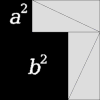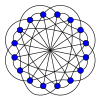Template:Did you know nominations/Andrew Gleason
 The following is an archived discussion of Andrew Gleason's DYK nomination. Please do not modify this page. Subsequent comments should be made on the appropriate discussion page; such as this archived nomination"s (talk) page, the nominated article's (talk) page, or the Did you know
The following is an archived discussion of Andrew Gleason's DYK nomination. Please do not modify this page. Subsequent comments should be made on the appropriate discussion page; such as this archived nomination"s (talk) page, the nominated article's (talk) page, or the Did you know (talk) page. Unless there is consensus to re-open the archived discussion here. No further edits should be made to this page. See the talk page guidelines for (more) information.
(talk) page. Unless there is consensus to re-open the archived discussion here. No further edits should be made to this page. See the talk page guidelines for (more) information.
The result was: promoted by Allen3 talk 16:43, 23 April 2013 (UTC).
| DYK toolbox |
|---|
Andrew Gleason
... that Harvard mathematician Andrew Gleason felt that mathematical proofs (such as the visual proof pictured) "really aren't there to convince you that something is true—they're there to show you why it is true"?
5x expanded by David Eppstein (talk), EEng (talk). Nominated by EEng (talk) at 06:07, 7 April 2013 (UTC).
- Planning further article improvement over next few days (even longer if time permits), especially trying to get photo of Gleason if possible. Though as much time as possible before appearance on mainpage would be appreciated, article should pass requirements as of now. I think the use of an animated image should look really neat-o (as the young people are wont to say).EEng (talk) 06:30, 7 April 2013 (UTC)
- Hook was 185 chars (incl. spaces) with
- (pictured)
- but with
- (such as the visual proof pictured)
- it's 210. Does the parenthetical count? Please don't vote us off the island! How about
- (such as the one pictured) (201 chars) or (see example pictured) (197) or (example pictured) (193)
- but those aren't really as good, I think. EEng (talk) 19:41, 7 April 2013 (UTC)
 Reviewer needed. BlueMoonset (talk) 04:02, 21 April 2013 (UTC)
Reviewer needed. BlueMoonset (talk) 04:02, 21 April 2013 (UTC)
 detailed article on good sources! Article: the lead should contain a summary of referenced facts from the article and therefore typically doesn't need references. Now the hook fact is only there, why? - I am not enthusiastic about the hook, "felt" seems odd for a scientist, the image is not part of the article, and I feel (!) that other people could say the same thing, not so special. Could you perhaps come up with a hook around the attractive pic of the Greenwood–Gleason graph? --Gerda Arendt (talk) 19:50, 21 April 2013 (UTC)
detailed article on good sources! Article: the lead should contain a summary of referenced facts from the article and therefore typically doesn't need references. Now the hook fact is only there, why? - I am not enthusiastic about the hook, "felt" seems odd for a scientist, the image is not part of the article, and I feel (!) that other people could say the same thing, not so special. Could you perhaps come up with a hook around the attractive pic of the Greenwood–Gleason graph? --Gerda Arendt (talk) 19:50, 21 April 2013 (UTC)
- The proofs bit is in the lead because it's a cornerstone of his teaching and research philosophy.
- Possible hooks, and the reasoning behind the one nominated are discussed at length at Talk:Andrew_Gleason#Possible_DYK_hooks.
- There's nothing odd about a scientist (or mathematician) "feeling" something, though in keeping with the current text of the lead it might be better as below (dropping Harvard, and a bit different from lead, for length reasons -- I suppose we could even drop mathematician in a pinch):
ÁLT1 ... that mathematician Andrew Gleason liked to say that mathematical proofs (such as the visual proof pictured) "really aren't there to convince you that something is true—they're there to show you why it is true"?
- Unfortunately, while the G-G graph proof as a whole might be a good example of the why it's true philosophy, the G-G graph illustration, on its own, isn't. But a-squared, b-squared, c-squared will invoke an instant (if painful) shock of recognition in many, plus it's eyecatching. As noted it's not used in the article itself, and no doubt that's unusual, but I'd be interested to hear why it's objectionable. EEng (talk) 20:43, 21 April 2013 (UTC)
- EEng (talk) 20:43, 21 April 2013 (UTC)
- I don't think the "proof"-saying should not be part of the lead, - I was surprised it's not in the article body. - I don't mean mathematians don't feel, but regarding proofs? - I missed the discussion of hooks so far. I looked at the article and thought of a) a hook (not this one) about the graph named after him, and b) the summary "one of the quiet giants of twentieth-century mathematics, the consummate professor dedicated to scholarship, teaching, and service in equal measure."
- --Gerda Arendt (talk) 21:13, 21 April 2013 (UTC)
- Don't give me that! You all think mathematicians are unfeeling robots! Gross prejudice! But you can make up for it by letting us know what you think after reading through the hook discussion. EEng (talk) 21:23, 21 April 2013 (UTC)
- (ec) Don't give you what? "I don't mean mathematicians don't feel." that's what I said, so they feel, no?? - I won't read the discussion, I want to write articles. I feel that "quiet giant" says more about him (for the average readers) than the rather complicated suggestion they will have to think about. --Gerda Arendt (talk) 21:38, 21 April 2013 (UTC)
- Don't give me that! You all think mathematicians are unfeeling robots! Gross prejudice! But you can make up for it by letting us know what you think after reading through the hook discussion. EEng (talk) 21:23, 21 April 2013 (UTC)
- Something like
:*ALT2 ... that mathematician Andrew Gleason computed the only nontrivial multicolor Ramsey number known, R(3,3,3) = 17, by splitting a complete graph into three Greenwood–Gleason graphs (pictured)?
- ? It doesn't really capture much of Gleason's varied career, but then neither does the other hook, and it's not possible to say a lot in 200 characters. I tend to think it's a bit too dry and technical for a good hook, though. —David Eppstein (talk) 21:32, 21 April 2013 (UTC)
- agree, too detailed, - can we perhaps say that the (eye-catching) graph is named after and he was termed quiet giant? --Gerda Arendt (talk) 21:42, 21 April 2013 (UTC)
- If we want to keep total clicks worldwide in the low hundreds, by all means let's repel them with nontrivial multicolor Ramsey numbers. I still like why-proofs, but to hedge my bets, I'll put forward:
ALT3 ... that the American Mathematical Society called Harvard's Andrew Gleason "one of the quiet giants of twentieth-century mathematics"?Inferior to ALT4 -- but I still like ALT1 better.
- ALT4 ... that the Greenwood–Gleason graph (pictured) is named
afterfor Andrew Gleason, who has been called "one of the quiet giants of twentieth-century mathematics"?
- ALT4 ... that the Greenwood–Gleason graph (pictured) is named
- —David Eppstein (talk) 21:58, 21 April 2013 (UTC)
- ALT5 ... that the Greenwood–Gleason graph (pictured) is named for Andrew Gleason, "one of the quiet giants of twentieth-century mathematics"?
- ALT6 ... that the Greenwood–Gleason graph (pictured) is named for Andrew Gleason, whom the American Mathematical Society called "one of the quiet giants of twentieth-century mathematics"?
 I approve ALT1, ALT4-6, prefer ALT5. Offline sources accepted AGF. If a prep builder prefers ALT1 I suggest to simply say "proofs (example pictured)", --Gerda Arendt (talk) 22:13, 21 April 2013 (UTC)
I approve ALT1, ALT4-6, prefer ALT5. Offline sources accepted AGF. If a prep builder prefers ALT1 I suggest to simply say "proofs (example pictured)", --Gerda Arendt (talk) 22:13, 21 April 2013 (UTC)
- ÁLT1X per reviewer suggestion, changing mathematical proofs --> proofs ... that mathematician Andrew Gleason liked to say that mathematical proofs (example pictured) "really aren't there to convince you that something is true—they're there to show you why it is true"?
- ÁLT1Y ... that mathematician Andrew Gleason liked to say that
mathematicalproofs (example pictured) "really aren't there to convince you that something is true—they're there to show you why it is true"?
 I like ALT1Y (and ALT1X) also, and you ;) (For those two, we need to ignore the rule that the image has to be in the article, for ALT4-6 the pic is next to ALT2 and in the article.) --Gerda Arendt (talk) 07:19, 22 April 2013 (UTC)
I like ALT1Y (and ALT1X) also, and you ;) (For those two, we need to ignore the rule that the image has to be in the article, for ALT4-6 the pic is next to ALT2 and in the article.) --Gerda Arendt (talk) 07:19, 22 April 2013 (UTC)
- I've added the image for ALT4-6 next to them. I'm with you -- prefer ALT1Y. David? EEng (talk)
- I prefer the animated image, and like the ALT1 variants (though I'm puzzled as to why word "mathematical" has a line through it in ALT1Y instead of being removed from the hook). However, I don't think we can ignore the rule that the image has to be in the article; is there some way it can be inserted, perhaps in the section that has the hook quote? BlueMoonset (talk) 14:20, 22 April 2013 (UTC)
- The strikeout is just to show how ALT1Y differs from 1X, but looks like it just confuses things. I would remove the strikeout, but then there would have to be a debate at MOS about how to strike out strikeout.
I'll add the image to the article (caption: A visual proof of the Pythagorean Theorem) if that's what DYK rules require, though it will be kind of silly. Several years ago I ran into a bio on the guy who thought up the SOS call (or something like that -- can't find the article now). It had an image of a boat, with caption A rescue boat such as this one might be dispatched in response to an SOS distress call -- which is fine for a children's book but silly for WP. This is kind of that same.
I am desperately trying to get a free-use image of Gleason to add to the article, but things are hectic in Boston right now for obvious reasons, plus I've been called out of the country suddenly. I'm glad this nomination is moving along (and I want to tip my hat to D.E., who did the real heavy lifting on the article) but is there a way to put it at the back of the line for actual appearance on main page, to give more time to find a photo?
- The strikeout is just to show how ALT1Y differs from 1X, but looks like it just confuses things. I would remove the strikeout, but then there would have to be a debate at MOS about how to strike out strikeout.
- I prefer the animated image, and like the ALT1 variants (though I'm puzzled as to why word "mathematical" has a line through it in ALT1Y instead of being removed from the hook). However, I don't think we can ignore the rule that the image has to be in the article; is there some way it can be inserted, perhaps in the section that has the hook quote? BlueMoonset (talk) 14:20, 22 April 2013 (UTC)
- I've added the image for ALT4-6 next to them. I'm with you -- prefer ALT1Y. David? EEng (talk)

